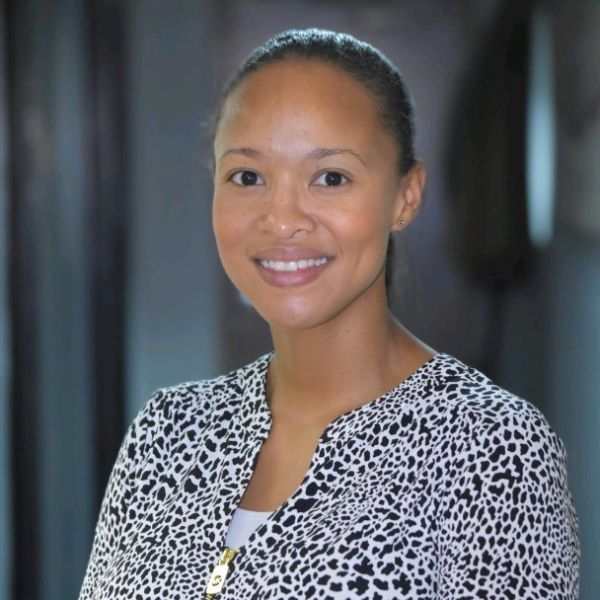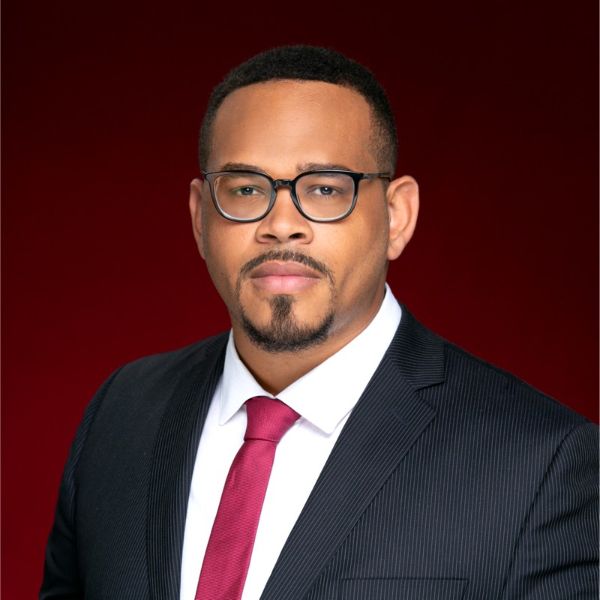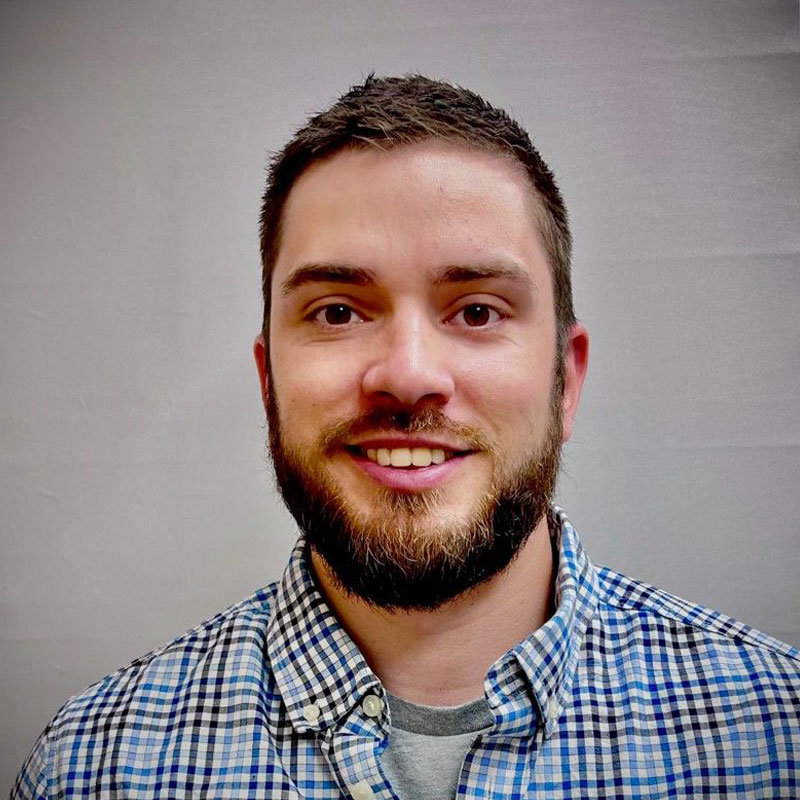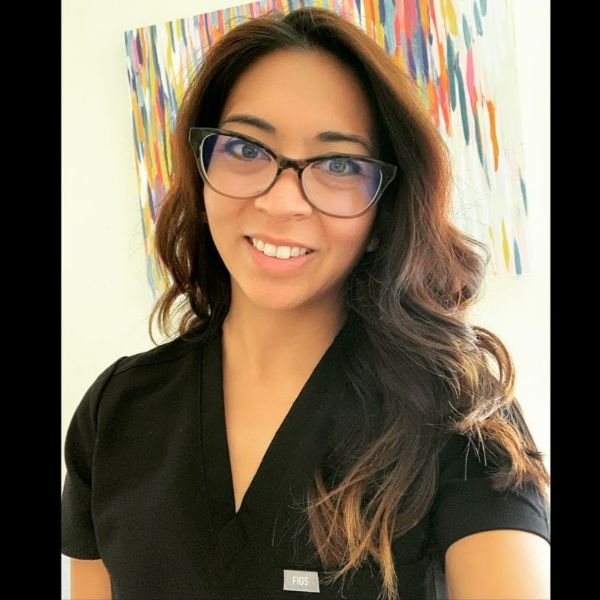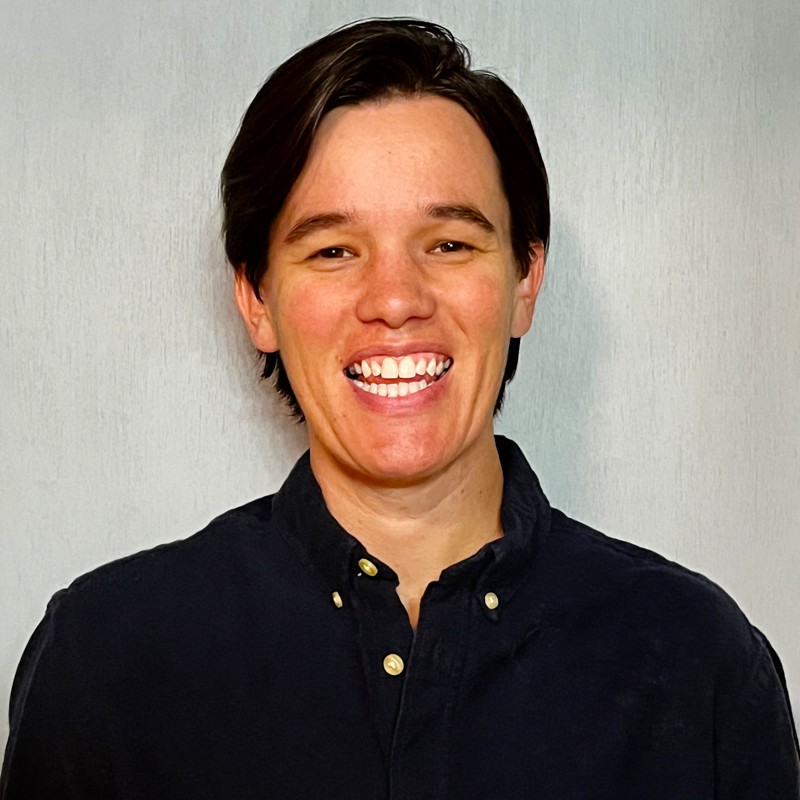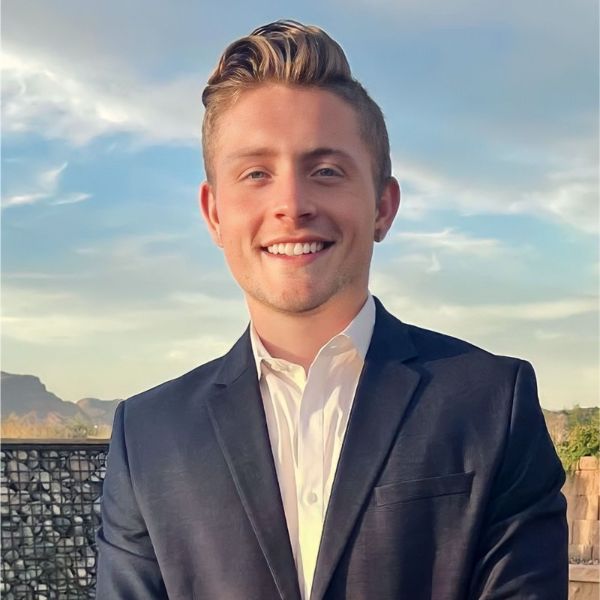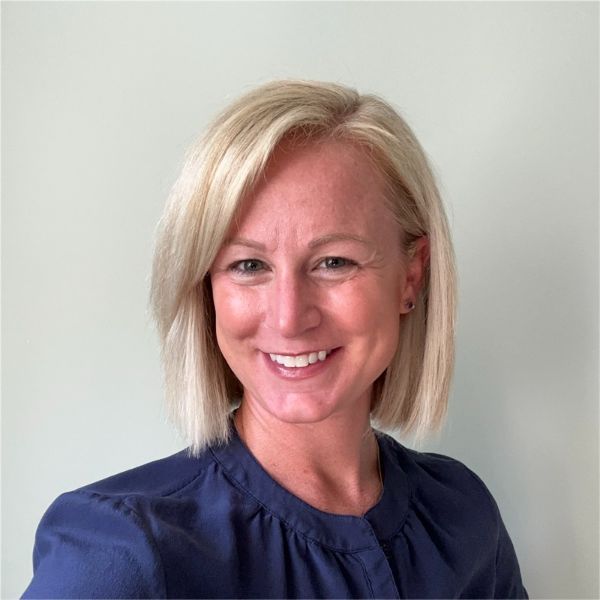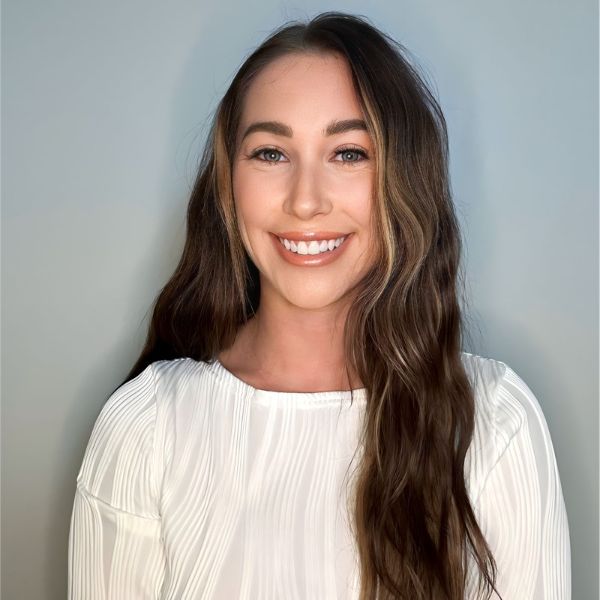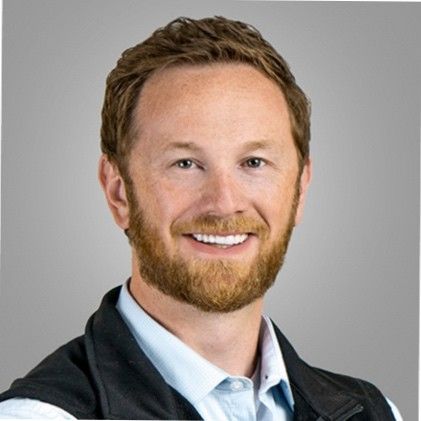
COVID is the theme of 2020, changing everything we do not only in the medical field but our entire lives in general. Tackling this elephant in the room, Samuel Gbadebo invites three wonderful guests to share information and insights about how the industry is doing and more. He has over Dr. Krishnan Chakravarthy, Dr. Zafeer Baber, and Dr. Zachary Cohen—all of them anesthesiologists and pain physicians. Together, they talk about how COVID has changed the way providers practice and what needs to be kept top of mind across all providers when it comes to dealing with patients in this space. They discuss the innovations the medical field has been thrust into making and adapting, and how they are doing the best they can to provide the care patients need during this time. Follow along in this part one of the interviews with Dr. Chakravarthy, Dr. Baber, and Dr. Cohen.
—
Watch the episode here
Listen to the podcast here
How COVID Has Changed The Pain Medicine Field With Dr. Krishnan Chakravarthy, Dr. Zafeer Baber, Dr. Zachary Cohen
I am excited because we have three wonderful guests that share so much information and insight into our topics. These are providers on the East and West Coast that practice in both hospitals and ASCs. One of them, you know well, Dr. Baber pain interventionalist, but the other two, have not been on the show before. You might know them, but you haven’t heard them here. Like Dr. Baber, they give us such great insights. We talk about how COVID has changed the way providers practice. We talk about what needs to be kept top of mind across all providers when it comes to dealing with patients in this space. We also get into what they like to see when dealing with manufacturers and what they want to see in the future that manufacturers can provide. Even what they champion and appreciate when it comes to these different companies. As always, thank you for reading this blog. I sincerely hope you enjoy this episode.
—
Gentlemen, how are we?
We’re great.
Thank you, guys, for being able to get on the call. We always try to bring value and get into the behind the scenes of what goes on in sales professional’s lives and our customer, which are you guys. I’m going to go ahead and give the floor right away to you. We have three doctors with us, all based in the US, East and West Coast. I’ll let each person introduce themselves. Dr. Baber, why don’t you start? Go ahead.
My name is Zafeer Baber. I am an anesthesiologist by training, and I also practice pain medicine in the Boston area. I worked in a hospital setting, at a hospital North in the Boston suburbs.
I’m Dr. Zach Cohen. I’m an anesthesiologist and pain physician as well. I’m in San Diego, California. I have four different clinics out here and operated out of a combination of surgery centers, hospitals, and do procedures in my office.
I’m Dr. Krishnan Chakravarthy, also anesthesia and pain trained. I’m excited to be on with both Zach and Zafeer. I have known them for quite some time. I’m an assistant professor at UCSD Health. I see patients both at the UCSD, a lot of civilians as well as the VA. I have been interfacing with the industry for quite some time now. It should be an exciting show. Thank you, Samuel, for getting us on here.
The big question that everyone wants to know right away, how do you guys know each other?
Dr. Cohen and I have known each other for many years. We went to medical school together at the Chicago Med and we’ve been in touch ever since. Dr. Krishnan and I know each other from Johns Hopkins. We trained together. He was an anesthesiology resident when I was doing my pain fellowship there as well. We worked together while we were both in training.
[bctt tweet=”The pain physician world is a small world and has a supportive culture.” username=””]
Dr. Krishnan Chakravarthy was my attending during my pain fellowship at the University of California, San Diego. Somehow, we all realized we knew each other. It’s been fun.
It underscores how small the pain world can be. Many people know each other through many different outlets, just because that’s how the pain world can be.
I was in a conversation with Zach one day. He was like, “I’m talking to my friend Zafeer.” I’m like, “You know, Zafeer?” He’s like, “Yeah, I know Zafeer.” I was like, “What a small world. I trained with them at Hopkins. This is crazy.” I agree with that sentiment that it is a small world and a supportive culture. As clinicians, we’re looking at the field in the future, It makes sense to reconnect with those people that you’ve always been close to.
It was an excuse to talk to your buddies about something and there’s a lot of great people in pain medicine now that want to advance the field. It makes it even better to have those friendships back in those conversations as well.
It’s crazy because many years ago when Zach and I were little bitty medical students, we were learning from each other in the anatomy lab and doing physiology. We graduate from medical school. Dr. Krishnan and I started learning from each other and the pain world in anesthesiology. We all became pain physicians, and we continue to learn from each other in the pain world as well. That underscores what happens in medicine. It’s a profession of constant learning and we continue to learn from each other over the past decade-plus.
Dr. Zafeer was a year ahead of me in medical school and a mentor to me and got me through a lot of long nights in the library. Dr. Krishnan was the same for me as when I was a fellow at UCSD. It’s cool to have both these guys as people to bounce ideas off of and talk to and use as a resource. They are smart guys.
I love that you guys still stay in contact and continue to educate each other on all the latest developments in your fields. We talked about change and how things are happening. COVID is the theme of 2020. It’s changed how we do everything. In a general sense, how has what’s been going on change the way you guys practice?
Prior to the COVID pandemic, there was another major issue going on as a public health issue, which was the opioid epidemic. It’s fascinating that the conversation shifted timely and appropriately, but when you’re looking at our field and the impact of this pandemic on access to care, the dynamics for interventional pain physicians has changed. There is no point in our field have we seen the amount of industry innovation that we’ve seen in the last many years where the definition of what is pain medicine and the change in our way we do care delivery from not just pharmacology all the way to now, people become extensive interventionalists. If you talk to Zach and Zafeer, they’ll tell you there is a new cadaver training course every weekend for a physician to learn a new technique.
With a pandemic where access to care as well as a lot of information that we’ve seen from February 2020 to now where we are trying to struggle through what is factual versus what is reality versus not. We are in a critical time in trying to understand how best to give our patients the best care in a climate where even now we have meetings talking about, “Do patients feel safe coming in? Do patients still want to access some of the things that we provide that’s been bread and butter to our field?” At the end of the day, there is an elective procedure. What are the risks or benefits of bringing people in? What’s the role of testing in that process? We don’t talk a lot about that and what that impact has on.
[bctt tweet=”Medicine is a profession of constant learning.” username=””]
Is it sensible from a small practice all the way to a large health system that can take the time of 2 or 3 months and do contact tracing? That may not apply to a lot of smaller practices. They need funding to keep their practices open. We are trying to come up with a unified strategy across, get to talk to about at the society levels, where we did a lot of the COVID webinars and things of that to educate a lot of the clinicians. It’s a major issue. We’re still trying to figure that part out. The industry has been significantly impacted by that.
For us, as physicians, the first thing we always want to do is keep our patients safe. In pain medicine, when you have patients that are on opioid medications and as you’re trying to wean them off, and then we have this deadly virus where you can’t see your patient in person, as much as you want to, it’s been a tricky position for everyone. I like to see my patients every 1 or 2 months to make sure that they’re safe, check-in on how they’re doing. I look at body language a lot with my patients and their overall physical appearance as a way to make sure that they’re safe.
As we’ve moved to some telemedicine and virtual medicine stuff, it’s shown how important the patient-physician interaction in the office is and to see your patients in person, to keep track of their wellbeing and keeping them safe. It’s been a tough spot for pain medicine and in many other fields as well, that now you’re trying to keep people safe and one more regard being the COVID-19 virus. It’s been tough, but in my practice, we’ve done well and made the appropriate adjustments. We’ve kept it very safe for our staff and our patients.
To expand what Dr. Cohen said, medicine is a field where there is lots of innovation, but it’s also, in many respects, steeped in tradition. When the outbreak happened, it forced all of us to reimagine what medicine is. All of a sudden, we went from a world where we were seeing our patients in the clinic every 1 or 2 months. We were forced to be placed in a position where we had to switch to telemedicine, whether we liked it or not. There are positive and negative things about that. As Dr. Cohen said, sometimes you can get a lot from a patient by talking to them in person, by seeing them in person by seeing how they are. In other respects too, lots of patients with transportation issues who cannot get out of their house or wherever they live to the clinic are able to now communicate with the physician by other means. Thanks to COVID, it forced our hands and forced us into the 21st century in terms of how we interact with our patients.
It showed too as a community of physicians how we can adapt quickly to rapid changes to provide still state-of-the-art and excellent care for patients when something terrible happens. The physician community throughout the world has adapted and done what they can to continue treating patients the best they can.
Dr. Krishnan, when you said you are still trying to figure out factual versus what’s reality versus what’s not, can you speak a little bit more to what you’re talking about there?
I sense a lot of time this sentiment of it’s just maybe a reflection of where we are, which is how do we emphasize an impact of something like a pandemic when we are still trying to understand what is this virus doing? What is this virus causing? What are the long-term health impacts of that? Part of the challenge with that is historically, when you look at past pandemics, one of the biggest things that came from that was the public health measures that dictated the impact of those measures in reducing spread. If you look at the classic example of the 1918 to 1919 pandemic, the biggest things that came out of that was social distancing, contact isolation, things that were put in place between even cities in the US that made a huge impact on how many cases were essentially established or found because of those measures.
Where this challenge lies is that in this climate where there are lots of pressures in everyday things that we do, whether it’s economic, whether it’s care delivery, we have to get to some form of standardization and how you apply care in that setting. That has to be based on good sound, public health measures, and judgments that have been proven through the historical use of evidence that they work. What happens is that you have a situation where we are now is sometimes the idea of what is factual versus non-factual, which you may be well founded in good science gets debated. That’s challenging because what people are not realizing is this is not suddenly going to go away now. We’re not in a situation that this is something that’s at a 3 or 6-month effort.
[bctt tweet=”Moving to some telemedicine has shown how important the patient-physician interaction in the office is and to see your patients in person.” username=””]
This is looking into what’s arguably now factually. The number of cases are rising. You are eventually going to have a situation where the resources that you take for granted are going to be less available. The choices that you make as a health system, as an individual practice are going to have to be very strategic. That’s going to be important to come in the early part of January and probably extending to you don’t know how far this type of strain of COVID is going to be. The pain doctors have done amazing throughout the country in terms of adopting this. Factually, we are in the types of things that we discussed, there are certain things that are more black and white.
As a collective, once you start to accept those certain tentative facts, then you can make good decisions and guidelines that a lot of people can follow. That’s what is the basis behind a lot of the public health measures that have worked in the past. That’s why we should be thinking about adopting, but that’s my opinion. I don’t know Zach and Zafeer’s thoughts on that. To me, that’s what important. That’s going to be more important going forward whether the stress of that impact is felt in the same way it has in the past, modern medicine has come a long way, but it’s important to recognize that.
I have something to add to Dr. Krishnan’s statement. In medicine, not just with COVID, but this could tie into a device in every aspect of medicine. COVID-19 has been such a rapidly changing environment sometimes from day-to-day. We do the best we can with the data that we have available at that time. It’s easy and this can go back to every aspect of medicine. Sometimes we don’t do the right thing looking back on the results that we’d gotten. At the time that the decisions are made, we’re doing it with people’s best interest in hand, but data changes. Studies get drawn out an extra 1 or 2 years. We learn more about the virus and treatments. We’re going to learn stuff in December 2020 that we didn’t know in February 2021. As this medicine, it’s an ever-evolving, changing, dynamic.
As they pointed out, there has been an ever-expanding element of COVID fatigue that has been going on. I don’t know if COVID fatigue is because of expectations versus reality. I remember when we first started the social distancing, there’s talk that we have two weeks to flatten the curve. People were like, “Let’s do this social distancing for two weeks, we’ll flatten the curve, and then life will move on as normal.” As Dr. Krishnan pointed out, that’s not how the world is working. We may have to do something like this for months or even years and that can play a role. One thing that I have recognized from my patients is how it is psychologically affecting them.
Unfortunately, social distancing is also bringing about social isolation. That’s one thing that we need to show our patients is that social distancing doesn’t mean social isolation. There are things you can do to maintain proper social distancing protocols but still prevent social isolation. Especially in the pain world where lots of our patients are elderly patients. They may live in a senior citizen facility where their family members cannot visit them as it has been well-documented in the news that a lot of these senior living facilities are the ones where COVID-19 is disproportionately affecting those small communities.
As we all know, our elderly patients are amongst the most vulnerable from getting bad outcomes from COVID-19. They’re the ones that have to be cautious above everyone else. That’s unfortunately, leading to social isolation. We have to express to our patients above all else that they could Zoom with their family members, they can talk on the phone and they can do other things that can lift their spirits socially.
You guys have a lot to navigate. The practice has changed because of telemedicine and how to make sense of that in your practice. The fact that you’re trying to sort out what’s real and what’s not. In 2020, science is often debated now, things that everyone said, “That’s obvious.” We’re now having discussions about, “Is that true, or do people want to believe that?” Even when it’s blatant that that’s what should be followed. With making sense and consider everything, how has it changed the way you interact with manufacturers? Let’s start with medical device manufacturers. How has this current environment changed the way you interact?
We had an instance in our office, without saying any names or companies. I like this person as a person. We had a rep that brought COVID into our office. I was doing a procedure on a Thursday or Wednesday. We didn’t even find out that she wasn’t feeling well until next Friday. We didn’t hear anything. She said she wasn’t feeling well on Thursday, started not feeling well on Wednesday night, tested positive for COVID, and didn’t tell us until Friday. We told her never to come back to our office. With a good reason, especially in this realm we are at, it wasn’t that we were upset that she had COVID or wasn’t feeling well because she was going fine in our office. It’s that she delayed telling us for eight days. That was a big issue for us because we considered it that she put our staff, patients, and a lot of people at risk. She should have been much more upfront about that. That was a huge issue.
[bctt tweet=”Medicine is a field where there is lots of innovation, but it’s also, in many respects, steeped in tradition.” username=””]
One thing that I could talk about is all three of us work a lot with spinal cord stimulator reps and other reps as well. For the sake of this question, I will talk about the spinal cord stimulator reps specifically. Before COVID hit, we were doing these trials and the way spinal cord stimulation works. We’ve talked about this, Samuel, on a prior episode, you do a trial that could be a week or so, you see how the trial goes and then you bridge to implant after. What ended up happening with COVID is I did a few trials on a few patients. We were planning on doing the implant and then COVID hit.
The patient got excited. There were all these expectations that their pain was finally going to be addressed. This deadly pandemic of our lifetime hit and they weren’t able to get their surgery because these are elective procedures. When you have a deadly pandemic, those are the procedures that need to be delayed for obvious reasons. What happened was I personally became much more reliant on our spinal cord stimulator representative. As we talked about, the representative is our quarterback.
They relay information between the patient and the physician. When this large delay between trial and implant occurred, I was even more dependent on our representatives to relay information between the patient and I, and maintain a relationship to get us through the peak of the curve until elective procedures started to start over again. In many respects, even though we weren’t actively doing trials and implants, our relationship with our device representatives was as important as ever.
The reps are such an important role with the patient with STEM.
It’s incredibly fascinating what’s happened to the industry. I’ve been fortunate to sit on the boards, a lot of the major STEM companies that are in the marketplace. There were times that conversations like this, they will look for advice such as, “Should we be testing every employee before they go into a physician’s office?” Let’s paint an interesting picture of where pain spaces now. In the past, the amount of interventional options that pain docs were doing in the OR was a lot less. Now you compound that by having many different treatment options for our patients that all require an operating room part of care delivery, and then you’re looking at a marketplace that’s getting extremely crowded.
The industry is scrambling in a way because it’s not the fact that there is a pandemic that’s raging, people are still trying to figure out, “When do I use one product versus another? What’s the right indication for one versus another?” It’s a fierce point, if you’re in an elective situation, there is a tremendous amount of emphasis on the industry also playing that role in the care management of the patient. That comes with trying to get guidance on what’s appropriate, “Should I be testing every employee before they walk into a doctor’s office? Should employees that have suggested symptoms even be into a doctor’s office in the first place?”
These are things that going back to my point, if you thought that COVID was going away, clearly it’s not. People thought by summertime, “This thing would be resolved. We could go back to business as usual.” I don’t think that’s the case. I think, as a collective, people are going to have to start asking these questions, “Should we be adopting certain requirements on the part of the industry and how does that interface with the health system?” I can guarantee in the same situation, it’s 100% how large health systems think. If we took a big loss during COVID, I’m going to put the cases that are emergent, urgent over elective cases, because naturally, you’re going to want to prioritize the things that are going to end making that health system solvent.
It’s going to be challenging. In wintertime, there’s going to be a lot of questions about guidance. The industry is going to look to have physicians set some benchmarks, “You need to be tested before you walk into the office and interact with our staff. You need to be tested before you interact with our patients.” I’m with Zach and Zafeer. There’s a lot to be stated about the expectation on what physicians are going to say with the dynamic of the companies that they work with and making sure patient safety is first.
That’s the medical device side of things. How has it impacted the way you interact with pharmaceutical manufacturers?
[bctt tweet=”Throughout the world, the physician community has adapted and done what they can to continue treating patients the best they can. ” username=””]
I explained the situation we had before. That’s a three-standard deviation outlier of situations, but we rely a lot on pharmaceutical reps and device reps for the information. A lot of it is when they stop by the office, tell us new studies that are coming out, and help introduce us to new options for patients sometimes. You don’t have that interaction as much anymore because of the social distancing. There is a lot of good information from reps that have been dropped because of this whether reps don’t want to show up to the office or offices don’t want reps coming in. That whole interaction has been altered.
I like what Zach says because I feel the same sentiment. We always talk about interpersonal, whether it’s the interaction between patients and physicians or patients and our colleagues. You get so much out of that part of it. I know we’ve become the digital world now. We turn on the video. It’s the same thing. I’ll be honest, it’s a little bit easier to prescribe a drug. There are 6,000 plus pain clinicians nationwide, maybe more, how many are heavily interventional? The point in that is there’s not a right and wrong way.
In the end, we want to do what’s best for our patients, but it is a little bit easier to imagine that you’re prescribing something versus getting into a setting where you need a lot of the ancillary staff. You need anesthesia and you need this X, Y and Z. There are different challenges for both. Nowadays, conferences are all virtual. I don’t even know how many people attend these things, but there are podcasts that are awesome. People are using them to learn a lot of things. There’s good and bad to that. I do miss the interpersonal interaction for sure. I would agree with Zach on that.
With Zoom, one of the conversations Krishnan and I always have is which company is the best and this and that. I believe it’s the cowboy, not the rifle. In every company, it works good. A lot of that is my rep interaction with the patient and how much support they’re able to give the patient, how much troubleshooting they can help during a spinal cord stimulator trial, or after and during implant. A lot of that has been changed with COVID like, “Does the patient come in and see the rep? How do we troubleshoot things over the phone?” Some of the relationships with the reps I work with have gotten even stronger because we’ve both changed our practice together. They’ve overcome issues as myself as a physician.
The one part that is another challenging is training physicians. Think about the days in the past that companies would have to set up these cadaver courses. We have unboxed there that are all congregating and learning from each other. How do you do that? In this climate, are you going to do isolation? Is it the expense of that? Even that part is drastically changed. We interact and train together, we problem solve. That’s understated that impact also.
I’m going for a course and I’m going to be interested to see how it is. This is the first thing I’ve done since COVID. I’ve been a little apprehensive about doing it, but I want to employ this technology in my practice. It will be interesting to see what changes are happening now versus courses in the past.
There are a few modalities that you can use to treat pain. One modality is interventions and the second modality is medications. As Dr. Krishnan talked about, when elective procedures were canceled during the height of COVID and patients needed to address their pain, half of the way we treat our patients is through procedures and you can no longer do procedures. You become even more reliant on the medications. That could be scary because as we know, there was an opioid epidemic out there. We don’t talk about it as much, but it’s as strong as it was in 2019. If you want to focus on non-opioid medications, you have to focus on many other types of medications.
As Dr. Cohen talked about, sometimes you get information from pharmaceutical reps. What I mean by that is they don’t tell you themselves what’s great about their medication necessarily, but they also set up these platforms where doctors can communicate with each other. That has turned virtual for the most part. I see Dr. Krishnan giving these talks all the time. I learned from him because of these virtual platforms that it’s easier for me to hear Dr. Krishnan give a talk now than it was in 2019 because I would have to fly to California to hear what he has to say, but now I can go online and hear what he has to say through a Zoom meeting. In that part, knowledge has become even more easily accessible.
[bctt tweet=”Unfortunately, social distancing is also bringing about social isolation.” username=””]
In this environment, how much easier it is to get ahold of people who are busy and in different levels of leadership, and get access to them because of what we’re all forced to do. It’s been a lot easier. Thanks to COVID. One thing that you guys talked about was you are pain interventionalists. You focus on the pain. That is the field. It’s shifted now to COVID, but Dr. Baber, you said the issues around pain are still very much there. It’s not like that’s died down what COVID has increased. Has it become relatively hectic to manage and everyone is trying to spur the moment to figure things out, along with manufacturers, or has there been some process you guys have been able to implement that’s allowed you to still address what’s going on with pain in-line with what’s going on with COVID?
—
That was part one of this provider panel with these pain interventionalists. Make sure you come back to check out part two and we’ll continue this discussion. We talk about COVID. Whether you’re in healthcare or not in healthcare, COVID is now something that has impacted every facet of everyone’s life. There’s no way around it. It brings on challenges, especially for those in healthcare. For the providers, it brings on the challenge of how are patients going to get to your office? Should you even be seeing patients in your office, and how can you keep the patients safe once they get inside your office? For the manufacturers, it’s how are we going to get access to see the providers and continue to help them give even better care and more efficient care with the medications and the devices that we’re selling to them? With the patient, how are you going to get the care that you believe you need if you feel that you can’t get the same acts you used to get before COVID?
If your visits are now telehealth visits, there’s something missing and you want more, what are you supposed to do? Those are the challenges that COVID has brought to healthcare in general. What’s becoming an even bigger challenge is the challenge of misinformation. We touched on it a little bit here in part one, we’re going to get deeper into the conversation in part two, but misinformation has become a big issue. There are people out there that believe COVID is not real. There are people out there that believe wearing a mask will do absolutely nothing to improve the spread of COVID. There are people out there that believe that taking a vaccine will do more harm than good.
Before 2020, conspiracy theories were there. Normally, when a conspiracy theory gets a little bit of traction, it’s still in a small subset of the population and the majority of the population would put it to bed. It might hang around a little bit. You might see it here and there. Hear from it from someone, a person in an offsetting, but for the most part, it remains a conspiracy theory and it’s done. Now, you have these ideas that are becoming mainstream and they’re going head to head with the ideas that seem to make obvious sense.
You’re left with the patients that need care no longer relying on the expert opinion of medical professionals. The professionals that went to med school spent arduous hours in residency, and then they spent half a lifetime taking care of patients to understand what we should and should not be doing in this exact type of situation. Yet because of misinformation, you have people that have nowhere near that amount of education making closed conclusions or hard conclusions about what they think it should be doing.
It’s a crazy time. We’re going to talk more about that in part two. You’ve got to make sure you come back. If you’re someone who wants to get into the medical sales field, whether it be device pharmaceutical, genetic or molecular, then make sure you visit EvolveYourSuccess.com and take the assessment. Click on Attain Medical Sales Role and take the assessment. That assessment is going to give you some insight into specifically what you can do and work on to get closer to your medical pursuit. It’s going to evaluate where you are and then give you some clues on what you can do to get closer to that job that you want in the medical sales industry. You can have an opportunity to set up a call with us here at Evolve Your Success and talk about a program, the Medical Sales Career Builder. That has put many people into the positions that they dream of.
If you’re someone who wants to improve their performance or take their career to an entirely new level, you want to have better relationships with the providers like the providers you read now. You want to be able to move your product and grow your product the way you believe it should grow. It’s because you believe in what you’re selling and you want your providers to use it and the patients to get that type of utilization, then visit EvolveYourSucces.com and select Improve Sales Performance. Let’s set up a conversation and have a good conversation about what you can do to not only improve your sales with our programs but to change the trajectory that you’re on and get to where you see yourself being.
As always, I thank all of you for reading the blog. We do what we can to bring you guests that will give you a good insight into what you can do in your career. What you can do to get into the right career, and what you can do as leaders to manage those reps that you have responsibilities for and to do the things that will make your company stand up that much more. We do what we can to bring you inside from our perspectives, the manufacturer perspective, the provider perspective, and even down to the sales rep perspective. Thank you for reading and make sure you come back for part two.
Important Links:
- Dr. Zafeer Baber
- Dr. Zach Cohen
- Dr. Krishnan Chakravarthy
- Previous Episode – Beyond Sales: Medical Device Sales Reps in Pain Medicine with Dr. Zafeer Baber
- Attain Medical Sales Role tab on Evolve Your Success
- Improve Sales Performance tab on Evolve Your Success
About Krishnan Chakravarthy
 Dr. Krishnan Chakravarthy, MD, Ph.D., is an anesthesiologist who specializes in multi-modal pain management. He completed fellowship training in pain management at Harvard Medical School, Massachusetts General Hospital and residency training in anesthesiology at Johns Hopkins School of Medicine, The Johns Hopkins Hospital. Dr. Chakravarthy earned his medical and doctorate degree from the University at Buffalo School of Medicine and Biomedical Sciences.
Dr. Krishnan Chakravarthy, MD, Ph.D., is an anesthesiologist who specializes in multi-modal pain management. He completed fellowship training in pain management at Harvard Medical School, Massachusetts General Hospital and residency training in anesthesiology at Johns Hopkins School of Medicine, The Johns Hopkins Hospital. Dr. Chakravarthy earned his medical and doctorate degree from the University at Buffalo School of Medicine and Biomedical Sciences.
As an Assistant Professor in the Department of Anesthesiology, and Affiliate Professor in the Department of Nanoengineering, Dr. Chakravarthy instructs medical students, residents and fellows at UC San Diego School of Medicine, in addition to running his own laboratory. His research interests include incorporating new technology into advancing pain care. This includes advancing the field of neuromodulation as well as using nanotechnology to develop new drug delivery and point of care device platforms to manage chronic pain. His research work has been featured in national and international venues and has been published in top journals, including Anesthesiology, Proceedings of the National Academy of Sciences of the United States of America, and Pain.
About Zafeer Baber
 College- BS in Biomedical Engineering at Columbia University
College- BS in Biomedical Engineering at Columbia University
Medical School-Chicago Medical School, Rosalind Franklin University
Residency in Anesthesiology-Columbia University Medical Center
Fellowship in Interventional Pain Medicine-The Johns Hopkins Hospital
Master’s in Journalism (Currently pursuing)-Harvard Extension School
About Zachary Cohen
 Medical School: Rosalind Franklin University of Medicine and Science
Medical School: Rosalind Franklin University of Medicine and Science
Internship: Case Western Reserve University/University Hospitals Case Medical Center
Residency: UPMC University of Pittsburgh Medical Center
Fellowship: University of California San Diego
Love the show? Subscribe, rate, review, and share!
Join the Medical Sales Podcast Community today:































